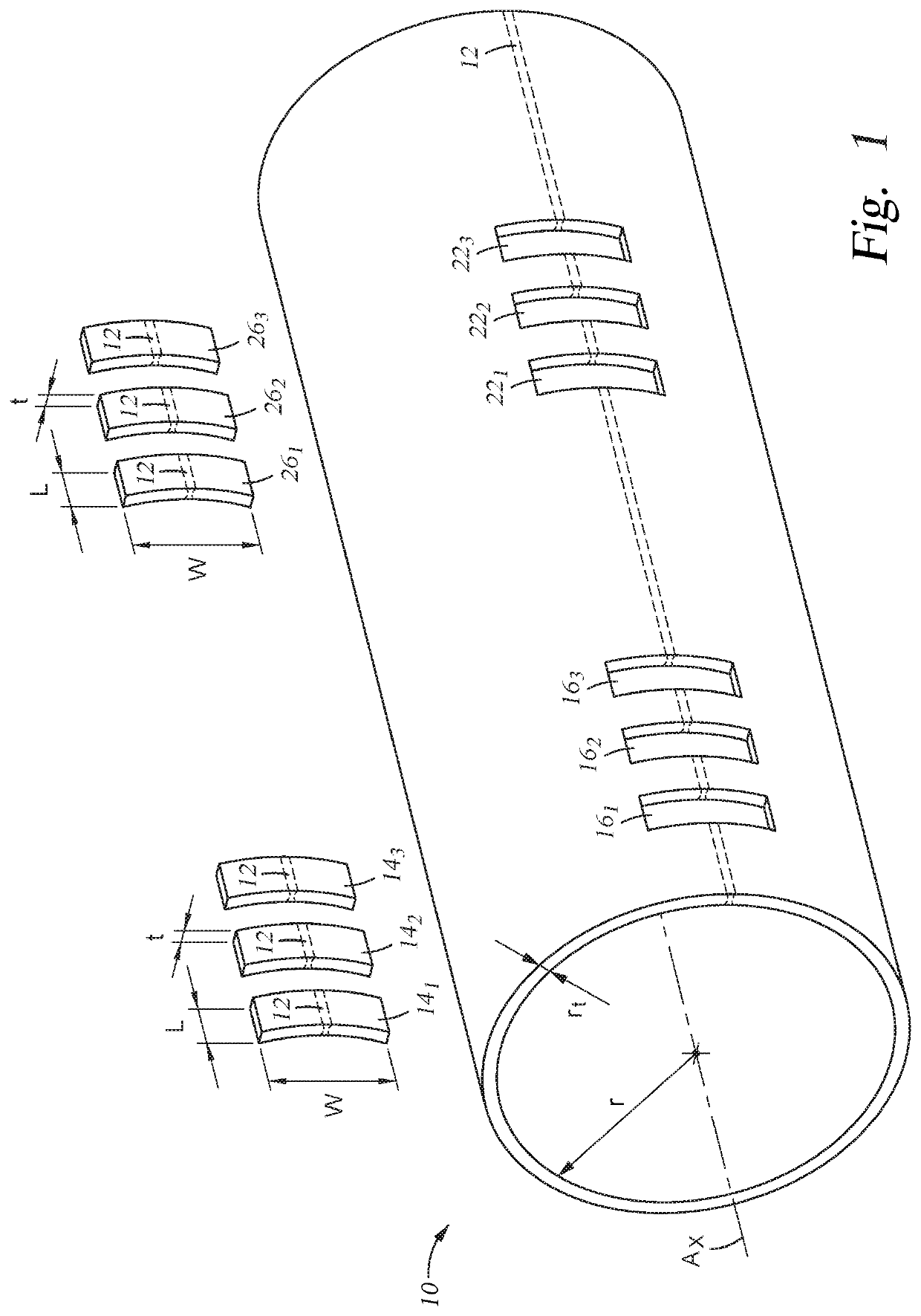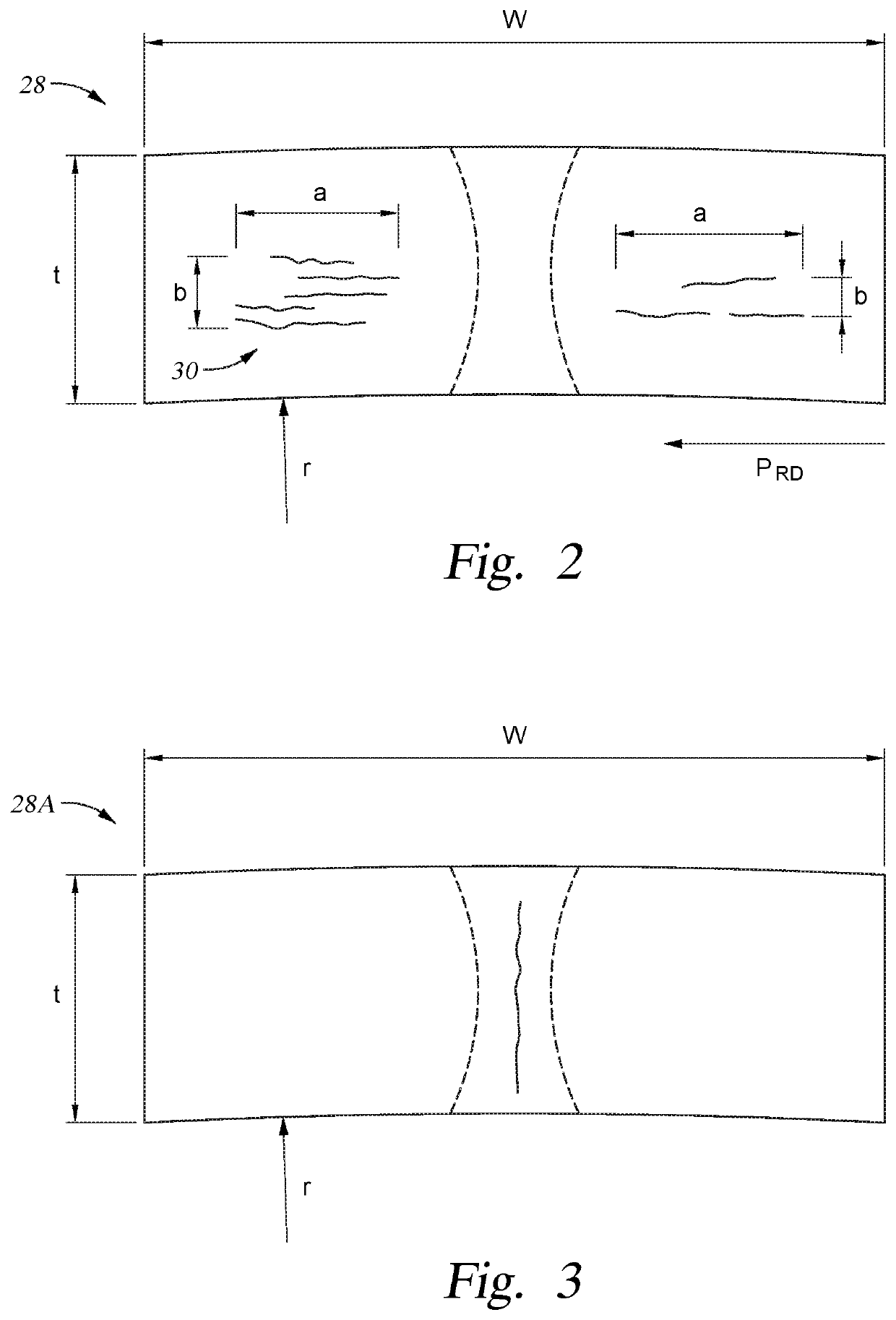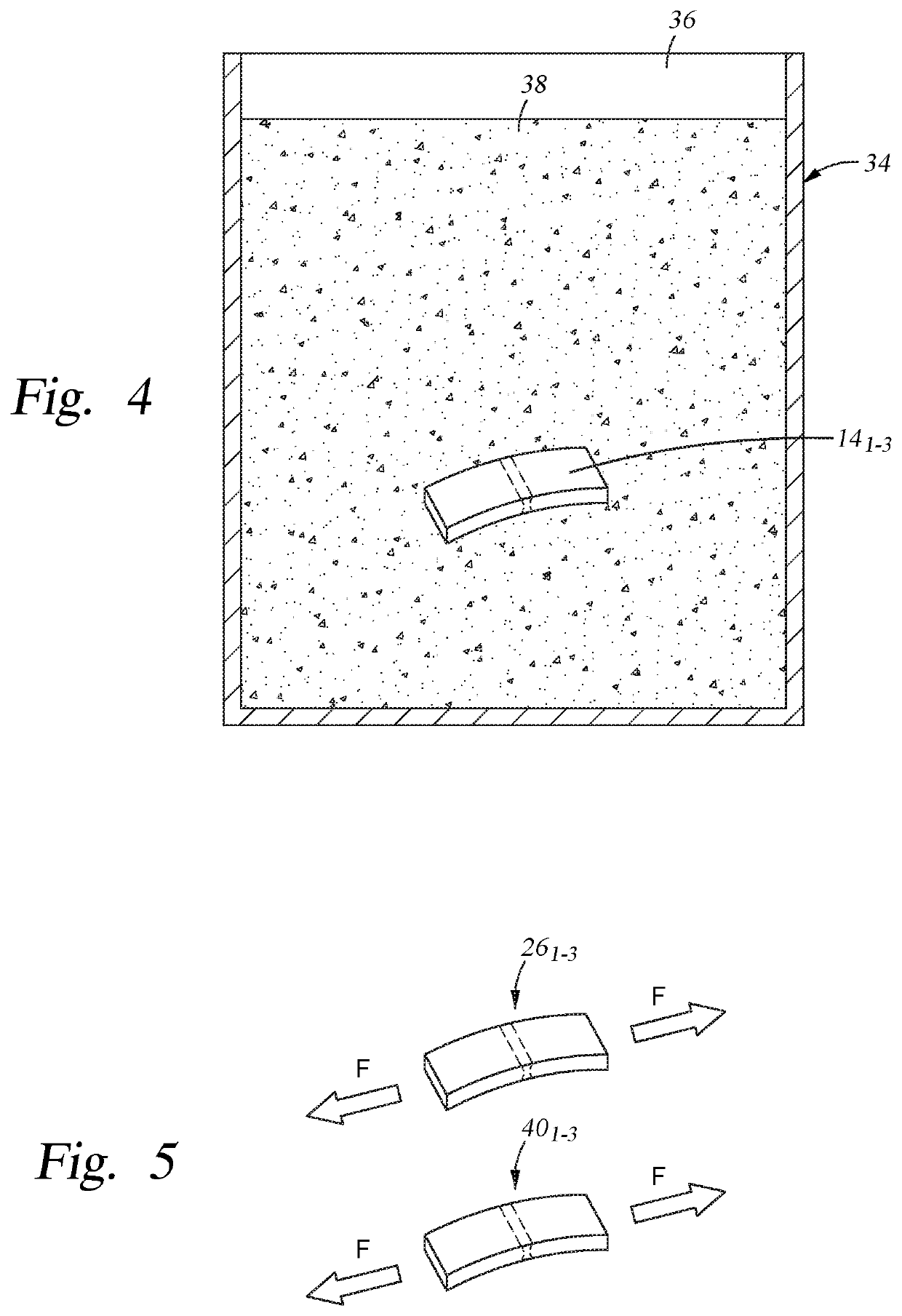Method of testing erw pipe weld seam for susceptibility to hydrogen embrittlement
a technology of erw pipe and weld seam, which is applied in the direction of manufacturing tools, instruments, other domestic objects, etc., can solve the problems of equipment failure, equipment damage, and equipment cracks,
- Summary
- Abstract
- Description
- Claims
- Application Information
AI Technical Summary
Benefits of technology
Problems solved by technology
Method used
Image
Examples
Embodiment Construction
[0016]The method and system of the present disclosure will now be described more fully hereinafter with reference to the accompanying drawings in which embodiments are shown. The method and system of the present disclosure may be in many different forms and should not be construed as limited to the illustrated embodiments set forth herein; rather, these embodiments are provided so that this disclosure will be thorough and complete, and will fully convey its scope to those skilled in the art. Like numbers refer to like elements throughout. In an embodiment, usage of the terms “around” and “about” includes + / −5% of a cited magnitude. In an embodiment, the term “substantially” includes + / −5% of a cited magnitude, comparison, or description. In an embodiment, usage of the term “generally” includes + / −10% of a cited magnitude.
[0017]It is to be further understood that the scope of the present disclosure is not limited to the exact details of construction, operation, exact materials, or em...
PUM
| Property | Measurement | Unit |
|---|---|---|
| elongation | aaaaa | aaaaa |
| period of time | aaaaa | aaaaa |
| length | aaaaa | aaaaa |
Abstract
Description
Claims
Application Information
 Login to View More
Login to View More - R&D
- Intellectual Property
- Life Sciences
- Materials
- Tech Scout
- Unparalleled Data Quality
- Higher Quality Content
- 60% Fewer Hallucinations
Browse by: Latest US Patents, China's latest patents, Technical Efficacy Thesaurus, Application Domain, Technology Topic, Popular Technical Reports.
© 2025 PatSnap. All rights reserved.Legal|Privacy policy|Modern Slavery Act Transparency Statement|Sitemap|About US| Contact US: help@patsnap.com



